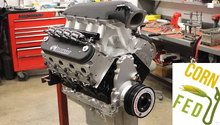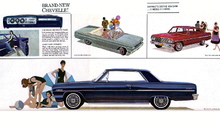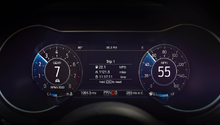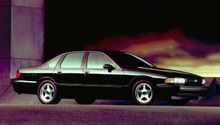Camaro and Firebird: What You Need to Know About E85 and Race Gas
E85 and race gas are both great options for LSX owners looking for ultimate performance out of their motors. Find out what each offers and how it will benefit your current setup!
This article applies to the Chevrolet Camaro and Pontiac Firebird (1990-2002).
There comes a point in an engine build where pump gas just doesn't cut it anymore. Whether you are looking for ultimate performance, or more reliability out of your combo, E85 and race gas have the potential to provide more performance than pump gas. Traditionally, when an engine is boosted or running extremely high compression, you turn to a higher octane fuel to prevent detonation, increase timing, and to run more boost. When you increase timing and boost (when applicable), you make more power. However, keep in mind that your car must be tuned for the fuel that you are running. If you have a stock engine with a stock tune, filling the tank up with a higher octane will actually decrease performance because you will have a slower burning fuel in an engine that can run fine on a faster burning fuel. Find out some of the advantages and disadvantages of these performance fuels below.
Race Gas
Before the popularization of E85 in the performance market, running race gas (100+ octane) was common because Premium (91 or 93) didn't cut it. However, race gas can be up to $10 a gallon today, making it a costly option and unrealistic for most car enthusiasts that daily drive their cars. One of the greatest advantages of running race gas over E85 is that you do not need to upgrade your fuel system because you are still running gasoline. Most race gas blends contain lead, which is an extremely effective octane booster. However, this can cause havoc on your catalytic converters if you are still running them. Also, there is a lot of evidence suggesting that race gas can reduce the life of O2 sensors because of the lead content. Unleaded race gas is also available, which will cure many of the issues above.
One of the greatest disadvantages of race gas is availability. It is very common to have to drive more than 30 minutes to find race gas. However, you're fuel economy/range will not be affected as much as cars that run E85. Also, keep in mind that there are tons of race gas blends out there, not counting the choices available at the pump. If you are serious about race gas, talk to a local tuner to find out if your combo would gain anything from using race gas.
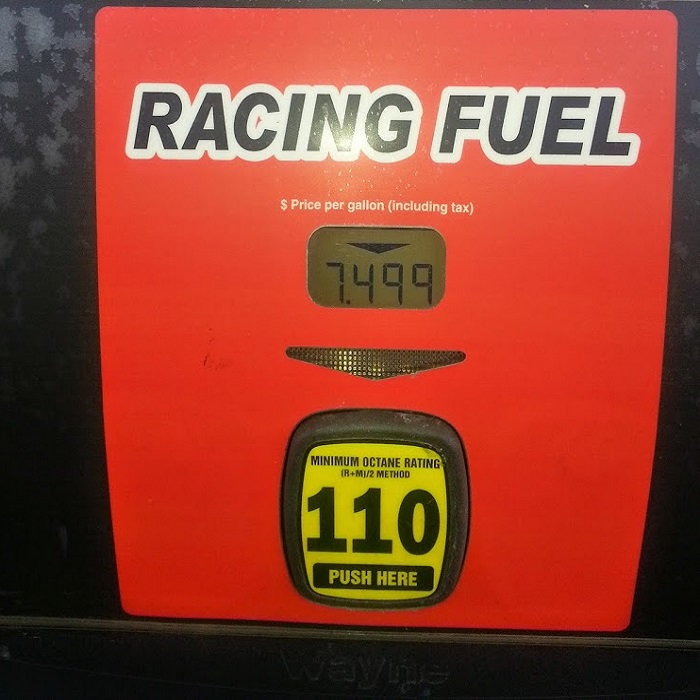
E85
E85 is a fairly recent phenomenon in the performance market. In some parts of the country, E85 can be less than $1 a gallon. The octane rating of E85 is around 100 to 105. For drivers on a budget, E85 is hard to beat. However, keep in mind that E85 burns about 30% faster than gasoline because it requires a greater volume to provide the same amount of energy. Therefore, you may need to upgrade your fuel system to accommodate the extra volume needed, usually in the form of larger fuel injectors. Another con is the availability of E85 in some areas. Check your local gas stations for E85 availability. The nice thing about E85 is that new stations are being built regularly, so you most likely have a station relatively close to you.
Once you have the fuel system for E85, your tuner can turn up the timing and take advantage of the awesome cooling and detonation resistance of E85. Make sure your tuner knows how to work with E85, as it requires a different air-fuel ratio etc. If you have a newer GM vehicle, you can run "flex-fuel." This means that there is an on-board sensor in your car that can determine the ethanol content in your fuel. Therefore, you can run different blends of E85 and gasoline, and your computer will automatically adjust the tune for it. The true magic of E85 occurs with boosted applications. Many turbocharged cars see a massive increase in power and it comes on a lot sooner due to the properties of E85. E85 is worth considering for any application, as long as you can deal with some of the setbacks like availability and range.

Figure 2. E85.
Common Issue
Fuel System Upgrade for E85
To accommodate for E85, your fuel system needs to be able to pump 30% more volume for the same power level as gasoline. Therefore, fuel pump upgrades and larger fuel injectors are needed for most applications. You can also upgrade your lines, regulator, and rails, but check to see if E85 has been run successfully on these stock components for your application.
Common Question
Do you really need race gas or E85?
Keep in mind that these performance fuels are for those looking for maximum performance. If your car is a daily driver that doesn't see too much performance driving, then running of these fuels might not be beneficial to you and you will have to deal with their setbacks. However, if you track your car once in a while, then seriously consider a performance fuel.
Related Discussions
- E85 or Race Gas Questions - LS1Tech.com
- Timing and Boost - Pump vs Race Gas - LS1Tech.com
- Race Gas Bad for Stock Car? - LS1Tech.com


